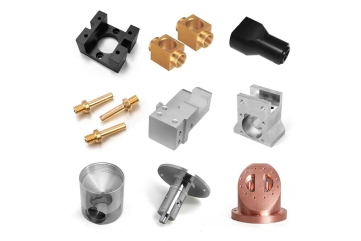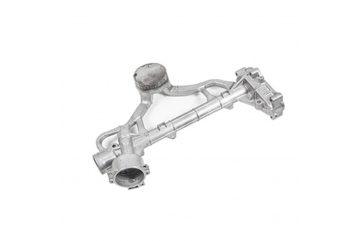7 WAYS TO REFINING ON YOUR DIE CAST PARTS FROM BIAN
1.Design for manufacturing (DFM) is a core methodology that ensures your die cast parts perform to specification and require the minimum of secondary operations. This is important when you consider that these operations can often represent as much as 80% of the component cost.
Discover our top tips for improving product efficiency,extending tool life, and lowering part costs
2.Reducing weight saves on material costs, leading to production efficiency with shorter solidification times. To achieve this, avoid overly thick cross sections.
3.Draft reduces the unnecessary complexity of tool manufacturing, facilitates the ejection of the part from the tool, and reduces tool wear, prolonging the life of the die. CONSIDER DRAFT TO SIMPLIFY TOOL MANUFACTURING 03 You should have twice the draft angle for inside walls or surfaces as for outside. This is because the material solidifies and shrinks onto the features that form the inside surface and away from those that form the outside surfaces. Shorter features require more draft than longer features. Figures 3 and 4 illustrate the different draft angles required for different metals.
4.While critically important, fillet radii are often overlooked by component designers. To avoid high stress concentrations in the component and die, use fillet radii of the appropriate size in all internal and external edges. (The exception to this rule is where the feature lands on the parting line of the tool.) Figures 5 and 6 illustrate there is an optimum fillet size where structural parts are concerned. Increasing the fillet radii size will generally decrease the stress concentration at the bottom of a rib. Eventually, the mass of material added by the fillet will induce shrinkage porosity in that area.
5.Ribs and webs are an efficient way to increase part strength and minimize the effects of dimensional variation caused by substantial shrinkage. Ribs can be added where part strength is a concern and can also aid in providing a path for metal flow during cavity fill. Figures 7 and 8 illustrate how webs and ribs can be added to improve the mechanical design and deliver a more robust component
6.Ejector pins are required in most cases to remove the part(s) from the die. This results in a residual ejector pin mark on the part. In addition to automatically pushing the part from the tool after solidification, ejector pins keep the part from bending.
Figure 9 illustrates how there are several ways to incorporate ejector pins. Ejector pin marks on most parts may be raised or depressed by 0.3mm. Larger parts may require additional pin tolerances for proper ejection. External threads can be cast. However, a full 360° thread is not recommended.
7.here is a risk of a slight shift in the halves of the tool which will cause the threads to be misaligned. Adding flats to the threads across the parting line of the tool alleviates this issue. Figure 10 illustrates how the recessed flat reduces the opportunity for parting line vestige to interfere with the component’s function.




